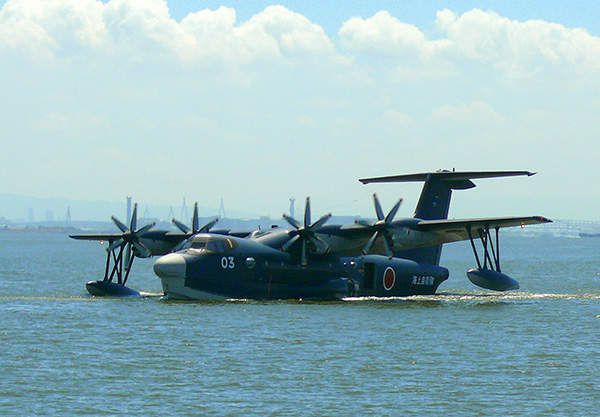In today’s world, only a handful of nations possess the capability to design and manufacture seaplanes, and Japan stands proudly among them. The Japan Maritime Self-Defense Force relies on the remarkable ShinMaywa US-2 multi-role seaplane for various critical missions, including search and rescue operations. With six of these exceptional aircraft in operation, the US-2 has garnered global attention, not only for its capabilities but also for its hefty price tag, making it one of the world’s most expensive seaplanes.
The journey of the ShinMaywa US-2 began eight years ago when it was developed as an advanced version of the existing US-1A aircraft. Initially designated as the US-1A Kai, this aircraft underwent substantial enhancements, including aerodynamic refinements, a pressurized hull, and more powerful engines. After rigorous flight testing, it was formally inducted into a squadron in March 2007, receiving its new title as the US-2 Amphibian.
One of the US-2’s standout features is its versatility in design, allowing it to seamlessly transition between various missions. Whether serving as a firefighting amphibian, passenger transport aircraft, or multi-purpose amphibian, the US-2 can adapt to the task at hand.
The ShinMaywa US-2 boasts a classic flying boat appearance with straight wings, twin engines on each wing, and a T-type tail configuration. Crafted from composite materials, it measures 33.5 meters in length, 33.2 meters in wingspan, and 9.8 meters in height. The cockpit is strategically positioned for excellent visibility, equipped with an integrated control panel featuring a single LCD panel.
Equipped with a fly-by-wire flight control system, the US-2 offers enhanced safety and control. Pontoon floats under each main wing aid in water stability. With an empty weight of 25.6 tons and a maximum takeoff weight of 47.7 tons, the US-2 can accommodate up to 20 passengers or 12 stretchers. Additionally, it features a tricycle-type landing gear for land operations.
Powered by four Rolls-Royce AE 2100J turboprop engines, each driving six Dowty R414-bladed propellers, the US-2 generates a maximum of 4600 horsepower per engine. Furthermore, it incorporates an LHTEC T800 turboshaft Boundary Layer Control compressor, delivering an additional 1364 horsepower.
The ShinMaywa US-2 can reach a maximum speed of 560 km/h, boasts a range of over 4,700 km, and a service ceiling of 7,200 meters, making it highly capable for various missions.
Designed for maritime rescue missions, the US-2 excels in short takeoffs and landings, both on water and land, requiring only a quarter of the distance needed by commercial airliners. Its unique Boundary Layer Control powered high-lift device allows it to cruise at exceptionally low speeds, approximately 90 km/h. The US-2 can also take off and land in waves up to three meters high, making it a reliable choice for ocean surveillance and remote island preservation.
With modifications, the US-2 can carry 15 tons of firefighting water and extinguishers, equivalent to 21 ordinary firefighting helicopters. It can quickly drop water with pinpoint accuracy and refill in just 20 seconds by taxiing on the water’s surface, allowing it to combat major fires effectively.
Countries like India have shown keen interest in acquiring the ShinMaywa US-2 for their naval and coast guard operations, indicating a growing market for this versatile amphibian aircraft. Talks are ongoing, and potential contracts could significantly expand its global presence.
The ShinMaywa US-2 stands as a testament to Japan’s expertise in seaplane design and manufacturing. With its adaptability, advanced technology, and exceptional performance, it has become an invaluable asset for critical missions, ranging from search and rescue to firefighting. As it continues to attract interest from nations worldwide, the US-2’s reputation as a versatile and reliable amphibious aircraft is set to soar to new heights.










